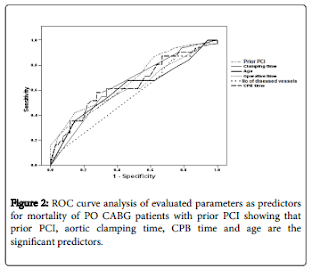Introduction:
Percutaneous
coronary intervention (PCI) is emerging as the main treatment option for
coronary artery disease and the number of PCI procedures are rapidly increasing
worldwide .
Today,
coronary artery bypass grafting is very commonly performed in patients who have
recurrent symptoms after previously successful PCI either because of late
failure of the deployed PCI or more commonly because of progression of the
native disease. The widespread use of PCI has resulted in an increasing number
of patients being referred for CABG surgery who have undergone prior PCI .
While the
efficacy and outcomes for PCI and coronary artery bypass grafting as the
primary treatment for coronary disease are well documented, there is little
recent data available that specifically focuses on those patients who
ultimately receive a surgical graft after a supposedly initially successful PCI .
There are a number of hypotheses as to whyprevious PCI may adversely affect outcomes with CABG
Another reason can be compromise of left
ventricular function and loss of collateral circulation due to occlusion of
side branches especially when many stents are deployed. Distal
micro-embolization from stents is another possible cause of left ventricular
dysfunction. Endothelial dysfunction induced by stenting is well known.
Furthermore, the necessity to bypass the coronary artery more distally where it
is smaller with more diffuse disease especially in patients with multiple
stents can also be a cause of worse outcomes after CABG.

No comments:
Post a Comment